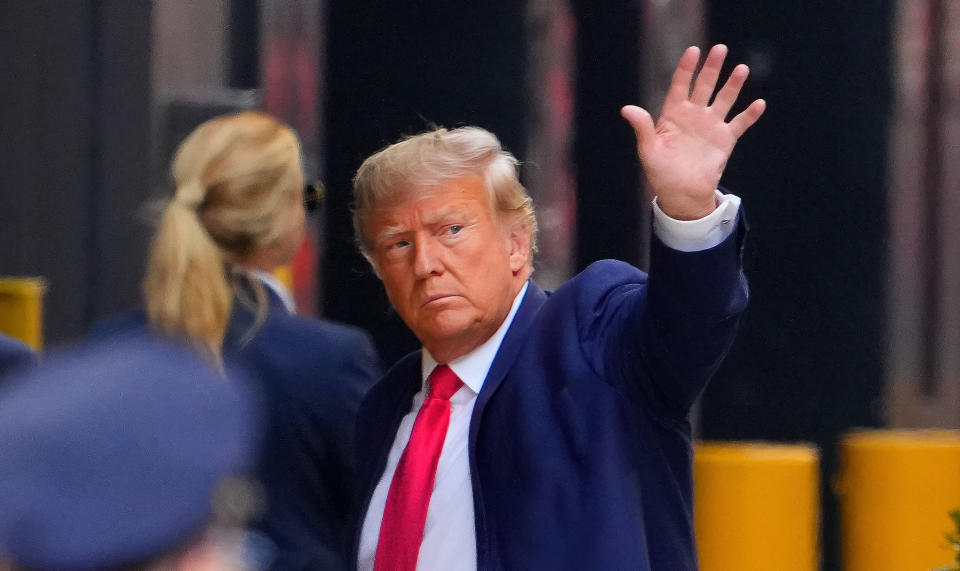What to know about the arraignment as Trump faces charges
- Oops!Something went wrong.Please try again later.
Former President Donald Trump spent one hour inside a Manhattan courtroom on Tuesday being arraigned on criminal charges following his indictment last week. He was charged with 34 counts of falsifying business records in the first degree, and pleaded not guilty to all the charges.
Trump was not arrested in handcuffs, but instead surrendered himself at the courthouse for his arraignment, which began at around 2:25 p.m. ET. What exactly does that court proceeding involve?
An arraignment is the first time a person appears in court in front of a judge and are told what they are being charged with. The defendant is read their rights, including the right to have an attorney appointed if they can't afford one. (Trump, of course, has his own legal team.) Then they tell the court if they plead guilty or not guilty to the charges. At that point, if the defendant is fighting the charges, the judge may set a date for a future hearing or trial.
As the New York court system's website explains, an arraignment is different from an arrest. Law enforcement can make an arrest if there is probable cause someone committed a crime. An arraignment follows an indictment, which comes when a grand jury votes to charge a person with a crime based on evidence. The grand jury is a group of citizens — 23 New Yorkers, in this case — that decides if a prosecutor has sufficient evidence to charge a person with a crime.
Manhattan District Attorney Alvin Bragg announced last week that a grand jury voted to indict Trump on charges related to the investigation into "hush money" payments to porn actress Stormy Daniels in 2016.
Trump has denied any wrongdoing and says he had no relationship with Daniels. In one of many statements last week denouncing the case on social media, he called the indictment "Political Persecution and Election Interference at the highest level in history." His lawyers have said the former president "did not commit any crime" and they vowed to "vigorously fight this political prosecution in court."

As part of the arraignment process, defendants are usually fingerprinted and have their mugshots taken and then are escorted into a courtroom to meet the judge. But Trump did not undergo a mugshot today.
The Secret Service, NYPD and other law enforcement agencies were a heavy presence in and around the courtroom. The judge ruled that video cameras would not be allowed inside for the proceedings.
The case makes Trump the first former president in U.S. history to face criminal charges. He flew from Florida to New York on Monday before making his way from Trump Tower in midtown Manhattan to the criminal courthouse for the arraignment Tuesday afternoon.
-Graham Kates, Pat Milton and The Associated Press contributed reporting.
The historical implications of former President Donald Trump's indictment
Stormy Daniels ordered to pay Trump legal fees after court loss in defamation case

